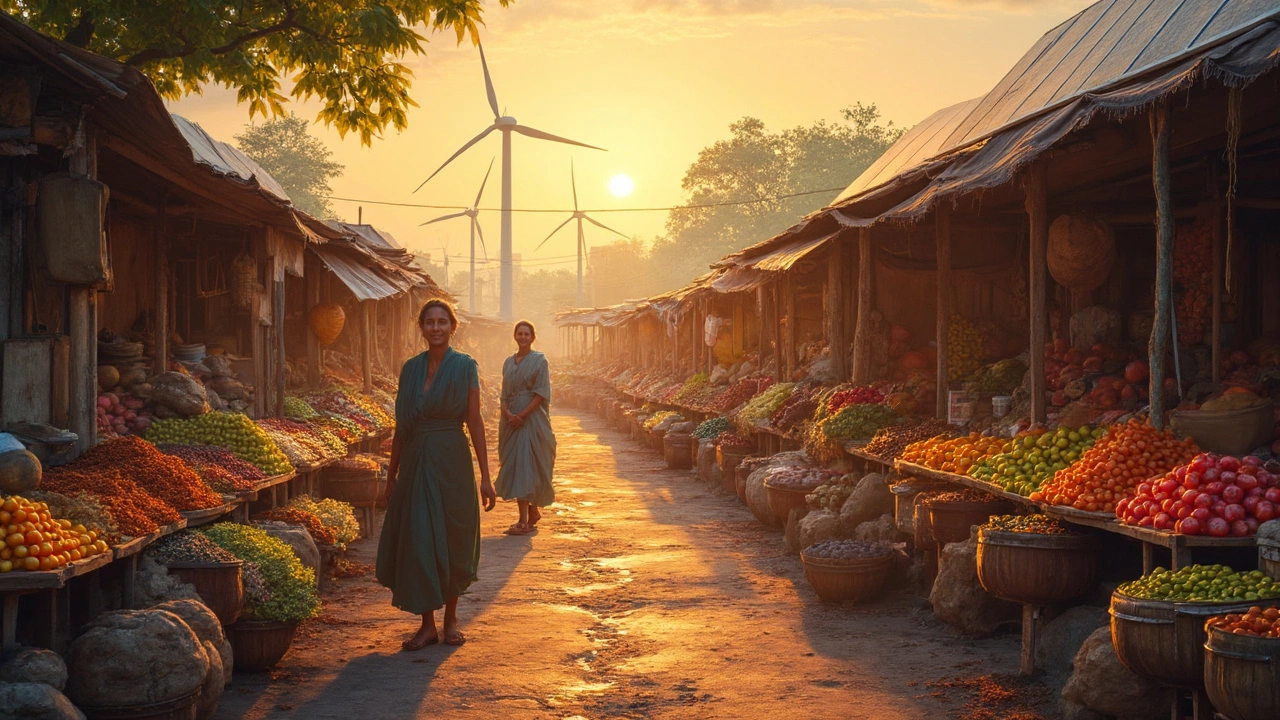So, what exactly is DPU when it comes to food processing? It stands for Decentralized Processing Unit. It's not just another industry buzzword but a game-changer for how food gets from the farm to your plate.
The idea is pretty simple. Instead of hauling raw ingredients across continents to central processing places, you process them closer to where they're grown. Think of it as setting up mini-factories right on or near farms. This not only keeps the food fresher but also cuts down on those pesky carbon emissions.
So why should you care about DPUs? Well, apart from being eco-friendly, they mean better-quality produce for us. When food is processed locally, it's less reliant on those long transits, which can often lower its nutritional value. Plus, it's a win-win for farmers who get to produce value-added goods on their premises.
- Understanding DPU in Food Processing
- Benefits of Using DPU
- Challenges and Considerations
- Real-Life Examples of DPU in Action
Understanding DPU in Food Processing
To get a grip on what a DPU really is, imagine transforming food processing from a centralized system to a network of smaller, local units. These Decentralized Processing Units are all about moving the task of processing food closer to the source of raw materials. It's like trading a huge factory for neighborhood workshops where fresh food gets handled right after harvest.
The traditional centralized model involves transporting raw food over long distances to be processed. This not only causes delays but also increases transportation costs and emissions. With a DPU, the idea is to cut down on these inefficiencies by placing processing units near or on the farms themselves.
Now, you might be wondering how these units manage to fit on the farms. Think of them as compact, efficient setups. They use high-tech, low-space machinery that handles everything from cleaning and packaging to more advanced processes like fermentation or canning. It's all downsized yet fully functional.
How DPU Impacts the Environment
By reducing the distance food travels, DPUs significantly slash the carbon footprint of the food processing industry. There's less dependence on transportation which means fewer CO2 emissions clogging up our skies. Plus, it helps in cutting down food wastage during transit.
DPU Makes Economic Sense Too
It's not just about the environment. This way of processing food often makes economic sense. Farmers benefit because they can add more value to their products without needing to rely on large corporations. Imagine running a small batch of tomato sauce right on the farm instead of sending tomatoes off miles away.
The Technology Driving DPU
Modern DPUs leverage the latest technology. Automation and smart systems are common. They might include sensors that closely monitor processing stages, ensuring consistency and quality. Small-batch processing tech can adapt to different kinds of produce, making them versatile and efficient.
All in all, the DPU model aims to keep food fresher, reduce costs, and offer economic benefits to local communities. It's a shift that promises to change not only the way our food is processed but also how we engage with local growers and producers.
Benefits of Using DPU
When it comes to food processing, the use of DPU, or Decentralized Processing Units, offers a host of benefits that are hard to overlook. The primary advantage is that it reduces the distance food travels. By processing food closer to where it's grown, transportation costs and emissions drop significantly.
Not only is it good for the environment, thanks to less fuel usage, but it also keeps food fresher. Ever wondered why local produce often tastes better? It's because less time between harvest and plate means fewer chances for nutrients and flavors to fade away.
Support for Local Economies
DPUs can be a huge boon for local economies. They allow local farmers to get involved in value addition right from their farms, meaning they can diversify from just selling raw products to offering processed goods. This creates jobs and boosts incomes in rural areas.Efficiency and Energy Savings
There's also the efficiency factor. Large, centralized processing units can become bottlenecks, especially during peak seasons. With DPUs, processing can happen more swiftly and precisely, cutting down on wasted resources. Plus, by using local resources, energy consumption is optimally managed.Here's a quick look at some numbers:
| Aspect | DPU Metrics |
|---|---|
| Reduction in Carbon Emissions | Up to 20% |
| Decrease in Transport Costs | Approximately 15% |
| Job Creation in Rural Areas | 5-10 jobs per unit |
In conclusion, benefiting from DPU units isn't just about the obvious eco-friendliness and cost savings. It's about boosting local delicate ecosystems and offering fresh produce that's healthy and tasty. By decentralizing processing, everyone from the local farmer to the global consumer stands to gain.

Challenges and Considerations
Setting up a DPU isn't all sunshine and rainbows. There are quite a few hurdles to consider. First off, the initial cost. Establishing small processing units can be pricey. You need to think about equipment, training, and even legal permissions. It's not as simple as setting up a stall at your local farmers market.
Infrastructure Requirements
Building the right infrastructure is crucial. Rural areas, where most farms are located, might lack the necessary transport and communication networks. Imagine trying to deliver processed goods from a farm with a single dusty road connecting it. Not a great picture.Quality Control
Then there's the issue of quality control. Maintaining consistent standards across decentralized units can be tricky. You need to ensure that every unit processes food to high quality. That's challenging without a centralized oversight system.
Market Access
Getting those locally processed foods to market is another challenge. Farmers may find it hard to break into existing distribution channels. Competition is tough, and big processors often dominate the market space.
Data Example
Interesting fact: In a 2023 survey, only about 25% of farmers reported having access to proper transport facilities for their DPUs.
| Challenge | Impact |
|---|---|
| Insufficient infrastructure | Delays in product delivery |
| Poor quality control | Inconsistency in food quality |
Having sufficient support systems in place, like technical assistance and stable supply chains, can help navigate these obstacles. Still, it's a road that requires patience, investment, and a lot of grit.
Real-Life Examples of DPU in Action
Across the globe, DPU is no longer just a concept but a reality reshaping how food is processed and distributed. Some folks are setting the stage for how it's done, and it's pretty cool, to say the least!
Local Cheese Producers in Italy
Let's kick things off in Italy. Over there, cheesemakers have been onto something special. Small, decentralized units are stationed on dairy farms, letting them whip up cheese right at the source. It doesn't just mean fresher cheese, but traditions and bragging rights are preserved too. Imagine getting your cheese with that original, authentic taste, minus the travel and middlemen.
Fruit Processing in Costa Rica
Now, hop over to Costa Rica, where tropical fruits get the star treatment. DPUs are strategically placed near banana and pineapple farms. This lets them process these fruit kings almost immediately after picking. The result? Better flavor retention, reduced waste, and more money staying within local communities.
Veggie Masters in Australia
Closer to home here in Australia, the trend is catching on in the veggie scene. In regions rich with produce, like the Murray-Darling Basin, DPUs are a thing, turning fresh veggies into ready-to-eat kits or frozen packs. It cuts down spoilage and makes sure our veggies don't lose out on vital nutrients while they upscale to the supermarkets.
Impact of DPUs on the Market
By bringing processing near the source, DPUs are economically advantageous too. They're not just boosting local employment, but they also reduce logistics costs. According to a recent report, food processing in decentralized units can cut transportation costs by up to 20%. Talk about a win for the earth and the wallet!
Even big firms are catching on. Some are partnering with local farmers, investing in DPUs to streamline supply lines and keep goods fresher. The food sector is catching wind of this trend, and it's breezing through fast.
